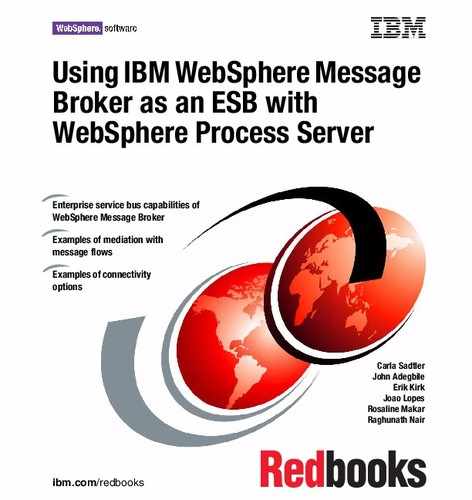Book Description
IBM® WebSphere® Process Server is a business integration server that was built to support solutions that are based on the service-oriented architecture (SOA). It plays a key role in the architecture of the IBM SOA Foundation by providing functionality for process services. Another key component of the architecture is the enterprise service bus (ESB). IBM provides three key ESB products: IBM WebSphere Enterprise Service Bus, WebSphere Message Broker, and the WebSphere DataPower Integration Appliance XI50.
This IBM Redbooks® publication has been written for architects who are planning an SOA solution and application designers who are implementing an SOA solution with WebSphere Process Server and WebSphere Message Broker. In this book, we highlight the ESB capabilities of WebSphere Message Broker and explain how you can leverage them with WebSphere Process Server. In addition, we discuss interoperability and provide examples to illustrate the integration of the two products.
Table of Contents
- Notices
- Preface
- Part 1: WebSphere Message Broker as an ESB
- Chapter 1: The IBM SOA Foundation and products in this book
- Chapter 2: Business processes with WebSphere Process Server
- Chapter 3: Mediation with WebSphere Message Broker
- Chapter 4: Connectivity options for interoperability
- Part 2: Scenarios
- Chapter 5: Scenario: Message splitting and routing
- Chapter 6: Scenario: WebSphere Message Broker acting as a transaction manager
- Chapter 7: Scenario: Data transformation and security
- Chapter 8: Scenario: Aggregation
- 8.1: Scenario overview
- 8.2: Environment
- 8.3: Queue manager implementation of WebSphere MQ
- 8.4: Business integration module
- 8.5: Message flows
- Aggregation implementation overview
- FindSuppliersMSetprj message set
- FindSuppliersWSInput message flow
- FindSuppliersAggFanOut message flow (aggregation fan-out) (1/2)
- FindSuppliersAggFanOut message flow (aggregation fan-out) (2/2)
- FindSuppliersAggFanIn message flow (aggregation fan-in) (1/2)
- FindSuppliersAggFanIn message flow (aggregation fan-in) (2/2)
- FindSuppliersWSResponse message flow
- Supplier1 message flow (1/2)
- Supplier1 message flow (2/2)
- Supplier2 message flow
- 8.6: Testing the flow
- Chapter 9: Scenario: Asynchronous callback
- Chapter 10: Scenario: Connectivity to third-party JMS providers
- 10.1: Scenario overview
- 10.2: Environment
- 10.3: WebSphere Process Server configuration
- 10.4: WebSphere Message Broker configuration
- 10.5: WebSphere MQ configuration
- 10.6: Progress SonicMQ configuration
- 10.7: SwiftMQ configuration
- 10.8: Business integration module
- 10.9: Message flow
- 10.10: Testing the flow
- Related publications
- Index (1/3)
- Index (2/3)
- Index (3/3)
- Back cover
